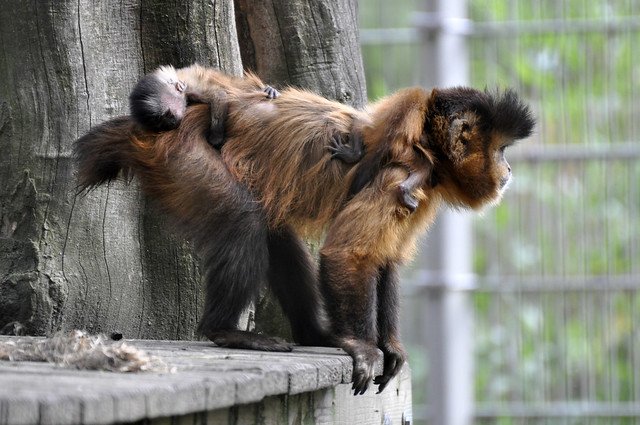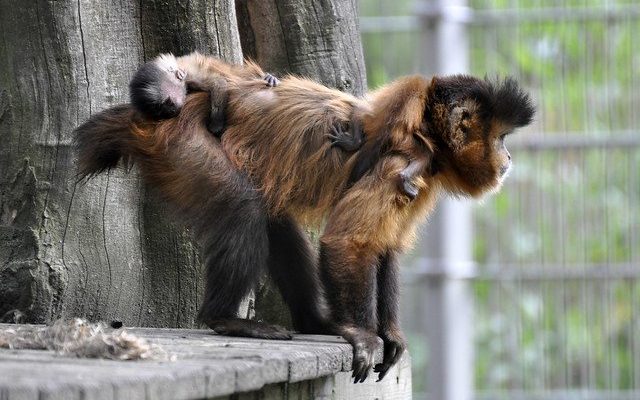
In the lush canopies of Central and South America, tufted capuchins create a vibrant social network not just for themselves but also for their little ones. Just like in a close-knit neighborhood, the success of the young relies heavily on the community. So, what does this parenting look like in the wild? Let me break it down for you.
The Basics of Tufted Capuchin Family Life
Tufted capuchins, with their distinctive tufted hair on their heads and expressive faces, thrive in family groups that can range from 10 to 30 members. These family structures are essential because they provide a safe environment for the young to grow up. The little ones are typically born after a gestation period of around five months, and from day one, they become the center of attention.
The moment those babies are born, the entire group rallies around to help care for them. It’s similar to a village raising a child, where everyone plays a role—from babysitting to feeding and even teaching. Strong bonds of cooperation make this possible, and honestly, it’s heartwarming to see how much these monkeys look out for each other.
Roles of Mothers and Fathers
In the world of tufted capuchins, mothers are the primary caregivers. They are nurturing and incredibly attentive. When babies are first born, they cling to their mothers’ fur, creating an adorable sight as they snuggle in for warmth and security.
Fathers also play a role, although it might not be as hands-on as the mothers’. They often help by defending the family group from potential threats and engaging with the young ones during play. You might wonder why this partnership is important. Well, having both parents involved gives the young capuchins a well-rounded upbringing, teaching them various social skills they’ll need to survive.
Learning Through Play
One of the most intriguing aspects of how tufted capuchins raise their young is their emphasis on play. Playtime isn’t just fun; it’s vital for learning. Young capuchins engage in chasing, climbing, and swinging, which builds their physical strength and agility. Watching a baby capuchin monkey tumble and get back up is like seeing a mini acrobat at work!
This playful behavior also helps them learn social cues. Interacting with peers prepares them for adult life by teaching them about cooperation, conflict resolution, and establishing relationships. You might think of it as their version of preschool, where they practice skills that will be essential for their roles in the group later on.
Sharing Responsibility Among Group Members
While mothers are the main caregivers, tufted capuchins have a strong sense of community, and this extends to child-rearing. Other group members, including siblings and older relatives, often take turns looking after the youngsters. You could think of it as an extended family where everyone pitches in.
This shared responsibility not only reduces the burden on mothers but also helps the young monkeys develop their independence. As they interact with different caregivers, they learn various behaviors, which enriches their social upbringing. Imagine how much they gain from these diverse experiences!
Communication and Bonding
Communication plays a crucial role in how tufted capuchins raise their young. They have a wide range of vocalizations and body language that help them convey messages. For instance, a high-pitched call might alert parents to danger, while soft coos signal comfort and attachment.
The bonding process between mothers and their babies is particularly strong. Mothers often engage in grooming, which not only keeps their babies clean but also strengthens their emotional connection. This bond helps the young capuchins feel safe and secure, laying a foundation for their future relationships. You could say it’s like building trust in a friendship—you need those little moments of care to grow strong.
Overcoming Challenges in the Wild
Raising young in the wild isn’t without its challenges. Tufted capuchins face threats from predators, habitat loss, and competition for food. The community plays a vital role in overcoming these obstacles. When danger approaches, adults often form protective circles around the young, showing how important teamwork is for survival.
Another challenge is finding food. Capuchins primarily eat fruits, nuts, and insects, so they must adapt to seasonal changes and availability. Mothers teach their young which foods are safe to eat and where to find them, ensuring they have the skills to thrive on their own. It’s a tough world out there, but through cooperation and guidance, these young monkeys learn how to navigate it.
Raising young is a collaborative effort for tufted capuchins. Between the attentive mothers, supportive fathers, and the rest of the community, these monkeys exemplify the power of teamwork in parenting. Their playful learning, strong social bonds, and shared responsibilities create a nurturing environment that prepares the young for life in the wild.
So next time you think about family dynamics in the animal kingdom, remember the tufted capuchins and how their spirited approach to raising young showcases the beauty of community. It’s a reminder that, whether in the wild or among ourselves, we all thrive on the support and love of those around us.

